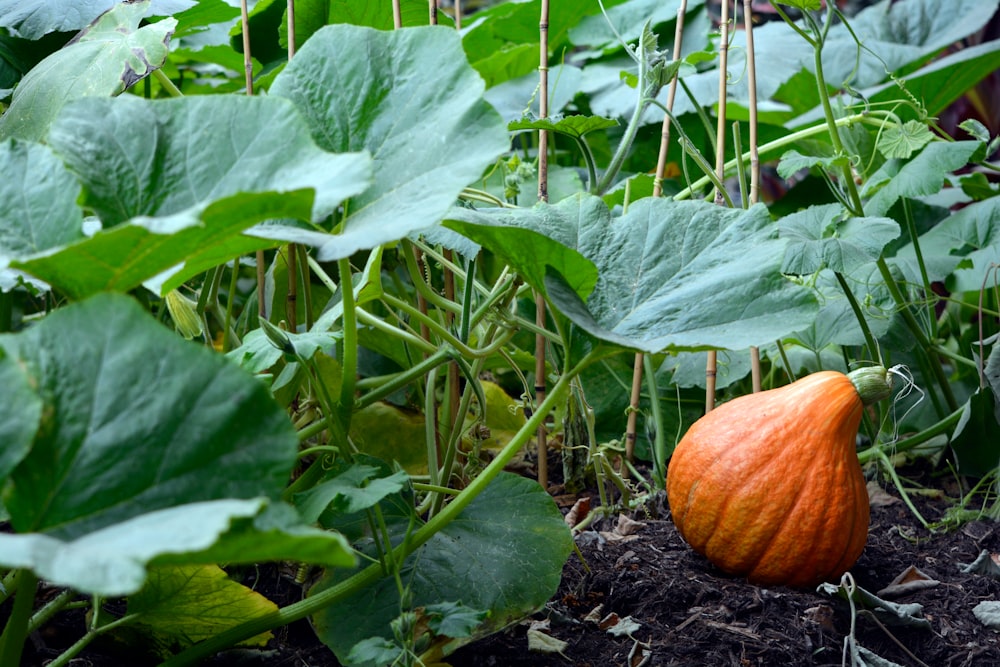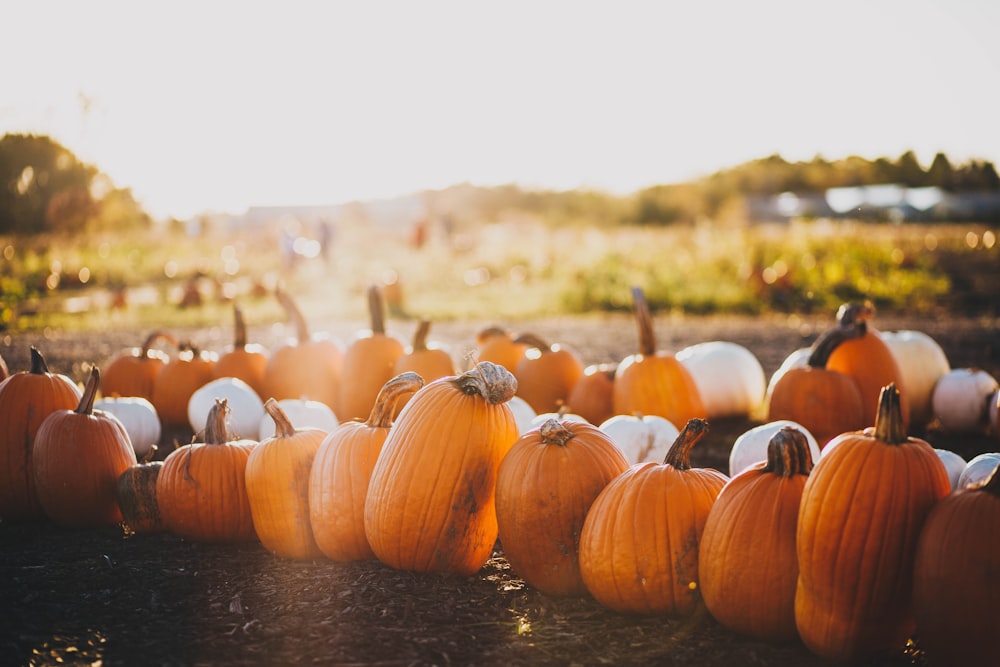
Pumpkins are a quintessential symbol of fall, with their bright orange hues and plump, round shape. But did you know that you don't need a sprawling garden or a large patch of land to grow your own pumpkins? Even if you live in a small apartment or have limited outdoor space, you can still enjoy the beauty and bounty of these seasonal favorites.
With a little bit of creativity and some careful planning, growing pumpkins in small spaces is easier than you might think. In this post, we'll share 5 tips to help you get started on your own pumpkin-growing adventure, no matter how much space you have available. Let’s get started with today’s article!

How Much Space is Needed to Grow Pumpkin
It's possible to grow pumpkins even in the smallest of spaces with as little as 12-16 square feet of ground area, a 4 x 8-foot raised bed, or a 7-28 gallon container. Opting for mini or small pumpkin varieties can yield great results while taking up less space. Additionally, growing them on a trellis or support structure allows for vertical growth, maximizing the use of available space. You can grow pumpkin in your kitchen garden easily.
Preparing The Soil for Growing Pumpkin
Add a few inches of old compost or other rich organic matter to your local soil to improve its quality. Soaker hoses or drip irrigation are preferable for pumpkins because they require a lot of water. Make sure the leaves don't get wet. Make sure your pumpkins receive adequate nutrition by using continuous-release plant food. In order to prevent rotting, elevate pumpkins as they develop. It is time to harvest pumpkins when their color has reached its peak. Firm skin and withered stems are signs of a ripening pumpkin.
Make Pumpkin Trellis
Maximizing limited ground area and promoting better airflow for healthier plants and pumpkins are just two of the many benefits of growing pumpkins vertically with a trellis or arbor. Additionally, harvesting becomes easier and more convenient, regardless of garden size. While smaller pumpkin varieties are recommended for vertical growth due to their lighter weight, larger varieties can also be grown this way with proper care and adequate space. DIY trellises or pre-built options are readily available for those who wish to experiment with this innovative method of pumpkin growing. Remember to place the trellis or arbor at the same time as planting the seeds or seedlings to avoid damaging the roots.
Grow Pumpkin in Containers
Growing pumpkins in containers is a great option for those who have limited space or want to keep their plants mobile. Here are some tips for growing pumpkins in containers:
Choose the right container: You'll need a container that's at least 5 gallons in size to give the pumpkin roots enough room to grow. Make sure the container has drainage holes to prevent waterlogging.
Pick a suitable pumpkin variety: Look for smaller pumpkin varieties that will fit in your container and won't put too much weight on the container. Good options include Jack Be Little, Baby Boo, and Small Sugar.
Use high-quality soil: Pumpkins need fertile, well-draining soil to grow well. Mix in compost or other organic matter to improve the soil quality.
Provide adequate water: Pumpkins need a lot of water, especially when grown in containers. Keep the soil consistently moist, but not waterlogged.
Place in a sunny location: Pumpkins need full sun to grow and produce fruit. Place your container in a sunny location that receives at least 6 hours of direct sunlight each day.
Fertilize regularly: Pumpkins are heavy feeders and require regular fertilization. Use a balanced fertilizer every 2-3 weeks, or consider using slow-release fertilizer pellets.
By following these tips, you can successfully grow pumpkins in containers and enjoy a bountiful harvest of fresh pumpkins.

Growing Pumpkin with an A-Frame Tower
Growing pumpkins vertically using an A-frame tower support is an excellent alternative to trellises or arbors. This method provides the same advantages to pumpkin plants while using two sides to grow on. With an A-frame tower support, you can plant pumpkin vines on both sides or either end and train them to climb over the top or across the sides for more space. By doing so, you can double your pumpkin-growing capacity without needing much more area for the plants. Search YouTube for an easy tutorial.
Growing Pumpkins in Raised Beds
Raised garden beds are another great option for growing pumpkins in tight spaces. Depending on the size of the pumpkins, you can plant two mini or small pumpkin plants or one medium or large pumpkin plant in a 4x8 foot raised bed. The vines can easily spill over the edges of the bed, but you can guide them around the perimeter to prevent them from sprawling all over your lawn. If you have raised beds adjacent to fences, the pumpkin vines can grow vertically on the fence to create a stunning plant wall. Even if your raised beds aren't close to a fence or wall, you can still incorporate a trellis, arbor, or A-frame to provide pumpkin vine support and save some yard space.
Caring for Pumpkins While Growing in a Small Space
Sunlight: To successfully grow pumpkins, it's important to find a sunny spot in your garden. Ideally, this spot should receive full sun throughout the day, but if that's not possible, make sure it gets at least 6 hours of direct sunlight daily. Also, keep in mind that pumpkins need ample space to grow and vine out, so make sure you have between 5 to 20 square feet of area available (depending on the variety). If you're short on space, consider training smaller varieties onto a trellis, which can help you maximize your growing area.
Water and Fertilizing: To ensure healthy pumpkin growth, provide ample moisture to your vines, particularly during hot weather when they may require extra hydration. However, be cautious not to water directly at the base of the plant, as overwatering can cause stem rot and eventually kill your pumpkins. Instead, create a 2-foot circle around the plant and water it there. This method allows the roots to access moisture while minimizing the risk of stem rot.
It's also important to avoid getting water on the leaves to prevent powdery mildew, a fungal disease that can damage both leaves and fruit. Consider investing in a drip irrigation system for long-term pumpkin growth, as it helps to avoid diseases. Pumpkins require lots of nutrients to grow and develop their large fruits, and as "heavy feeders," they benefit from nutrient-rich soil. Add compost before planting and use it as a mulch around your growing plants. For the biggest pumpkins, water them once a week with a liquid fertilizer formulated for vegetables.
Start Growing Pumpkins and Enjoy
Growing pumpkins can be a fun and rewarding experience, and with a little planning and care, you can produce some impressive results. Whether you're growing pumpkins for a Halloween display or to use in cooking, following these tips for planting, watering, and fertilizing will give you the best chance of success. Remember to choose a sunny spot, provide plenty of water, and give your plants the nutrients they need to thrive. With a little patience and hard work, you'll soon be enjoying the fruits of your labor and have some delicious pumpkins to enjoy!




